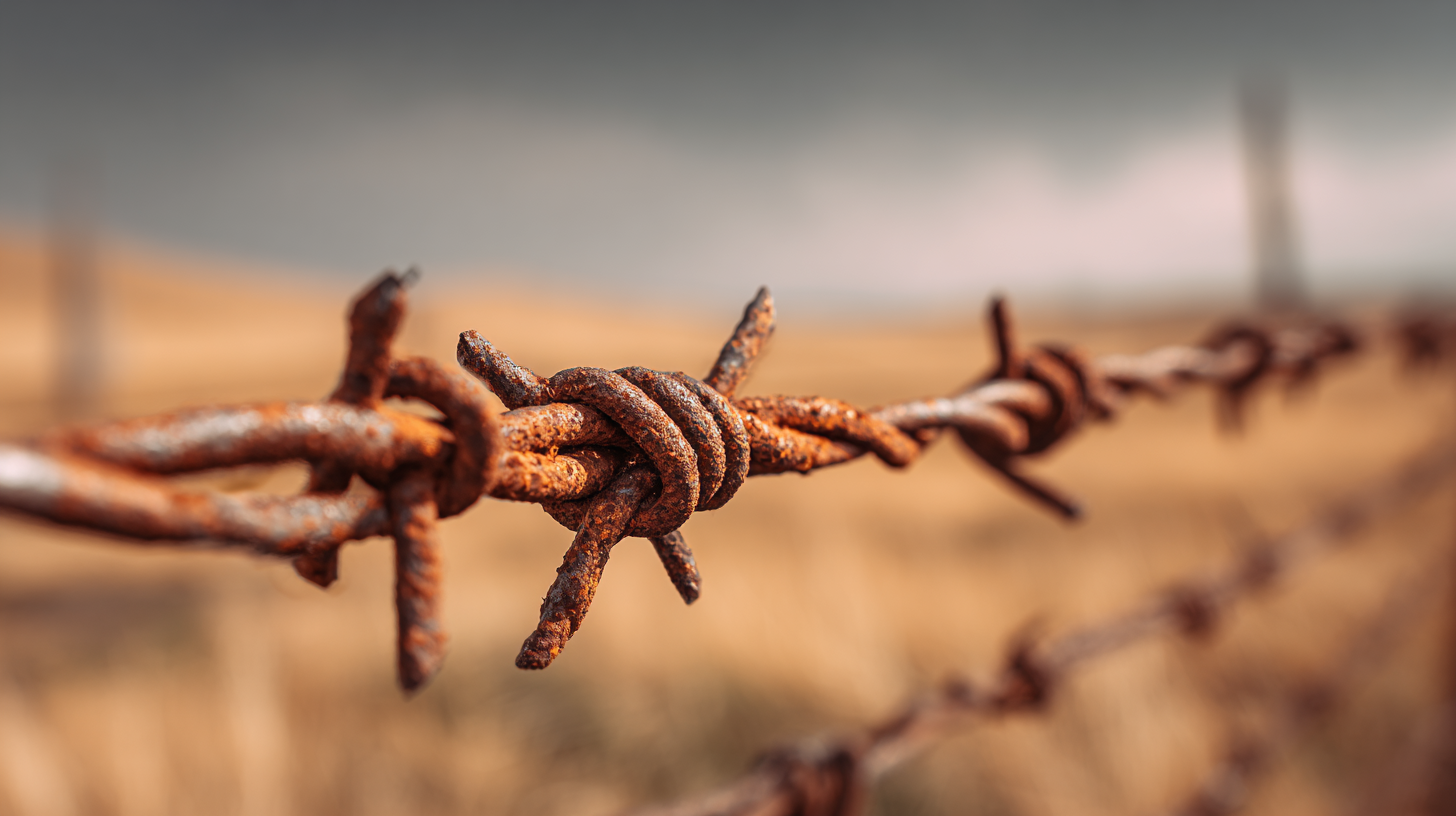7 Best Practices for Using Security Barbed Wire Efficiently
 Security Barbed Wire has long been a foundational element in perimeter security strategies, providing an effective deterrent against unauthorized access. According to a recent report by the Global Security Barriers Market, the use of barbed wire in security applications is projected to grow at a CAGR of 5.8%, highlighting its critical role in safeguarding properties across various sectors. As threats to security escalate, the demand for efficient and effective fencing solutions intensifies, underscoring the necessity for best practices in the deployment of Security Barbed Wire.
Security Barbed Wire has long been a foundational element in perimeter security strategies, providing an effective deterrent against unauthorized access. According to a recent report by the Global Security Barriers Market, the use of barbed wire in security applications is projected to grow at a CAGR of 5.8%, highlighting its critical role in safeguarding properties across various sectors. As threats to security escalate, the demand for efficient and effective fencing solutions intensifies, underscoring the necessity for best practices in the deployment of Security Barbed Wire.
From installation techniques to maintenance, understanding these key practices can enhance security measures and ensure that resources are utilized optimally. In an era where security breaches can have devastating consequences, leveraging industry insights and adhering to proven methodologies is essential for maximizing the effectiveness of Security Barbed Wire in protecting individuals and assets.
Understanding Security Barbed Wire: Types and Benefits
Security barbed wire is an essential component in perimeter security, providing both physical deterrence and emotional reassurance for property owners. Understanding its types and benefits can significantly enhance its effectiveness. There are various types of security barbed wire, including standard barbed wire, razor wire, and electric barbed wire. Standard barbed wire features sharp barbs at intervals along the strands, making it a cost-effective option for deterrence. Razor wire, on the other hand, is designed with flat, razor-sharp edges, creating a more formidable barrier. Electric barbed wire adds an additional layer of security by delivering a shock to potential intruders, further discouraging unauthorized access.
The benefits of security barbed wire extend beyond physical deterrence. It is incredibly versatile, adaptable to different environments, and can be installed on various structures, such as fences, walls, and even rooftops. This adaptability makes it a popular choice for securing a wide range of properties, from industrial sites to residential areas. Additionally, security barbed wire is relatively low-maintenance and cost-effective over time, providing a durable solution for long-term security needs. By understanding the types and specific benefits of security barbed wire, property owners can make informed decisions to enhance their safety measures effectively.
Key Considerations for Choosing the Right Barbed Wire
When choosing the right barbed wire for security fencing, it’s essential to consider the specific requirements dictated by the type of animals in your care, as well as the safety needs of the area. According to industry experts, the type of animals you need to contain—be it livestock, pets, or wild animals—greatly influences the selection of fencing materials. For instance, high-tensile barbed wire is often recommended for livestock, as it provides durability and can withstand heavy pressure without sagging.

Safety considerations also play a pivotal role in selecting the appropriate barbed wire. A study indicated that improperly chosen fencing can lead to injuries among animals and increased vulnerability to breaches. Factors such as the height of the wire and the spacing between strands can determine the effectiveness of the fence. It's crucial to analyze your specific security needs and incorporate features like barbed angles or additional electrification to deter potential intruders while ensuring the well-being of the animals on your property.
Effective Installation Techniques for Maximum Security
When it comes to enhancing security with barbed wire installation, understanding effective techniques is crucial. The SANS Institute's recent report on cyber threats underscores an important principle: safety measures, whether physical or digital, must be methodologically applied for maximum efficacy. Proper techniques not only deter intruders but also ensure that the installation itself is resilient against tampering. For instance, maintaining a consistent tension across the wire and ensuring it is positioned at an optimal height can significantly enhance its deterrent effect.
Moreover, according to industry standards, integrating barbed wire with additional security systems—like motion sensors—can provide a layered defense strategy. This approach is similar to best practices in cybersecurity, where organizations are advised to implement multiple security layers to protect against various attack vectors. A proactive installation of security barbed wire, combined with these advanced systems, creates a formidable barrier, ensuring that both residential and commercial properties remain secure amidst increasingly sophisticated threats. If improvements like these are made to enhance security, they may even qualify for energy tax credits, encouraging homeowners to invest in their safety as well as energy efficiency.
Maintenance Tips to Ensure Longevity of Barbed Wire Fencing
To ensure the longevity of barbed wire fencing, regular maintenance is crucial. One of the primary steps in upkeep is inspecting the wire for any signs of wear or damage. Look for rust, which can compromise the integrity of the wire, and replace any sections that show significant deterioration. Tightening loose wires is also essential; over time, barbed wire can sag, making it less effective as a security solution. Using tensioning tools can help maintain appropriate tension, ensuring the wire remains taut and functional.
Additionally, it’s important to keep the area surrounding the barbed wire clear of vegetation and debris. Overgrown plants can cause physical damage to the wire and create potential entry points for intruders. Regularly trimming back any nearby foliage will not only protect the barbed wire but also enhance its visibility as a deterrent. Finally, applying a protective coating can help prevent rust and corrosion, especially in harsh weather conditions, adding years to the lifespan of your barbed wire fence.

Legal Regulations and Safety Guidelines for Barbed Wire Use
When utilizing security barbed wire, adhering to legal regulations and safety guidelines is paramount to ensure both effectiveness and compliance.
It's essential to familiarize yourself with local laws governing the use of barbed wire, as these regulations can vary significantly from one jurisdiction to another.
Many areas have specific height restrictions, required signage, and limitations on where barbed wire can be installed, especially near public spaces or residential zones.
Failing to conform to these legal stipulations can lead to fines and liabilities.
In addition to legal compliance, safety guidelines must also be strictly followed. Barbed wire poses inherent risks, not only to unauthorized trespassers but also to legitimate users and nearby individuals.
Therefore, installing safety measures—such as warning signs and appropriate fencing height—is crucial.
Regular maintenance checks should be conducted to ensure the integrity of the barbed wire and to prevent incidents that could lead to injuries or accidents.
By prioritizing these regulations and safety practices, users can effectively mitigate risks while maximizing the security benefits of barbed wire.

Home
About Us
Products
Customize
Application
Support
Blog
Contact Us








